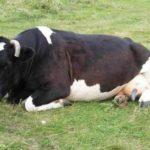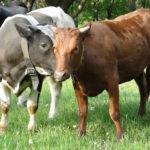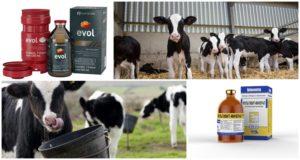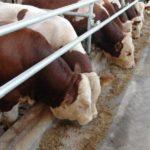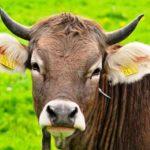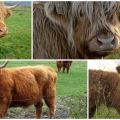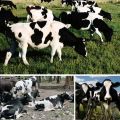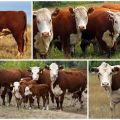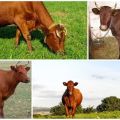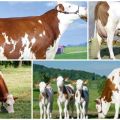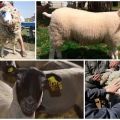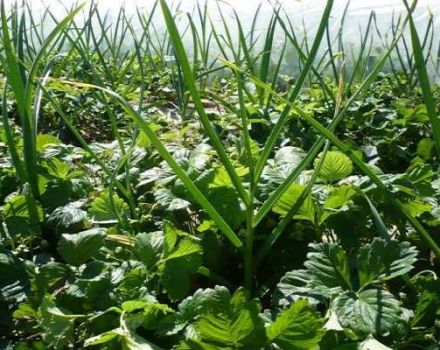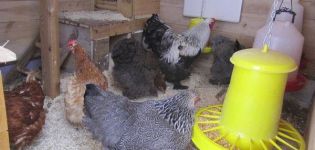Why and how many times a year grading of livestock is carried out and evaluation criteria
Bonding of cattle is a mandatory on-farm event. Includes an overall individual rating for each individual in the herd. The purpose of the exercise is to establish pedigree and quality values, features of the subsequent use of cattle. Livestock breeders, researchers, farmers with higher veterinary education have a permit for appraisal.
Cattle bonding: what is it
This is an event that is held on a regular basis to identify the most productive representatives of cattle in the herd. In the future, this will be needed for the formation of breeding stock or offspring. It is important to carry out the procedure on a continuous basis, as there is a natural loss of livestock due to diseases, infertility and similar phenomena. To compensate for the deficit, it is advisable to form the livestock from the best representatives of cattle.
Grading allows you to accurately determine the quality value of individuals. The data obtained is the basis for the distribution of living creatures by purpose. The prospective livestock is left for reproduction, the rest - to replenish production goals (for meat, for milk). The Ministry of Agriculture has developed the necessary instructions to regulate the specifics of appraisal.
Rating classes
In total, 4 classes are distinguished in practice. The compliance of the animal is established after the assessment has been carried out. At the same time, cattle cannot constantly correspond to only one class. This is due to the fact that individuals grow, and their performance changes every year.
Official classes:
- Elite-Record (ER) - the number of points scored exceeds 81.
- Elite (E) - score range from 71 to 80.
- Grade 1 (1K) - 61-70.
- Grade 2 (2K) - 51-60.
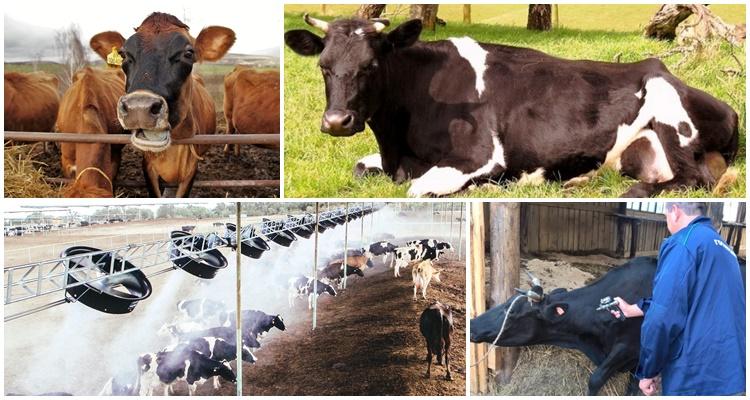
The score differs in different points in each of the categories. For productivity, the maximum possible is 60, for the constitution - 24, for the genotype - only 16. Each individual can score up to 100 points, but if the number is less than 50, it is considered an out-of-class variety. Such animals are not allowed to breed.
Most often, they are immediately sent for slaughter, since they do not carry any value for the economy.
How many times a year should you do?
Bonitizing to identify the breeding value is carried out once a year. Young animals, castrated individuals, oxen are not allowed to participate. Lactating cows are assessed after feeding is complete. Young animals are examined at least 6 months after birth. Bykov - at the onset of hunting.
Criteria for assessing herd representatives
The first and main factors are gender, age. There are also several additional criteria for evaluating individual individuals. They will differ depending on the direction of the breed. Common to all - genetic information, equipment and appearance or exterior.
Otherwise, the criteria are different:
- For dairy cows - the volume and quality of products, milk yield, udder readiness for automated milking.
- Gobies - the ability to reproduce healthy offspring.
- Young animals are the quality of body development.
Additional criteria and explanation for scoring.
| Criterion | How is the appraisal |
| Birth (for young animals) | Thorough study of documents, veterinary passport, pedigree parents. Conclusion - a purebred individual or a cross. |
| Torso exterior | In cows, attention is paid to the shape and size of the udder, the harmony of body composition. In bulls - on the brightness of the breed, the structure of the hind limbs, the harmony of the exterior. Individuals with a developed withers in accordance with age, a broad sternum, no interception on the shoulder blades, and the correct shape of legs become "excellent students". |
| Productivity (for cows) | The volume of milk yield, fat content of milk, speed of return are taken into account. The data is checked in a specialized table. |
| Reproductive function | To evaluate the bulls, the number of active spermatozoa obtained during the year is analyzed. The second option is the number of cows fertilized in one mating season. Cows are rated on the basis of the duration of the calving period, the course of the calving itself. |
| Offspring quality | Semen is collected from 12-month-old bulls. The obtained seed material is frozen. Then the same number of cows are inseminated. The born offspring is registered, checked for defects, deviations. |
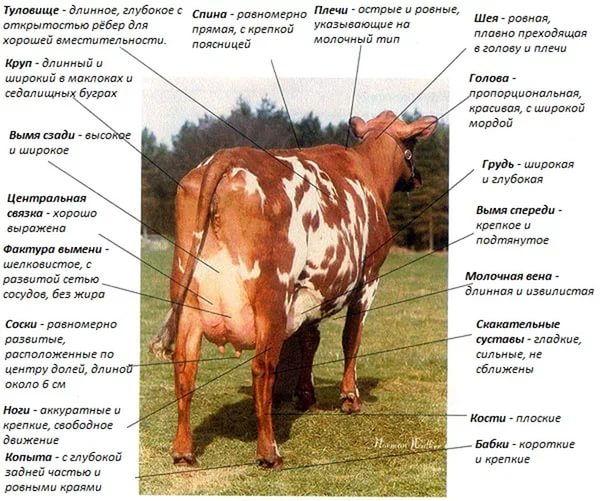
How to carry out correctly?
It is important to prepare for the appraisal procedure. The preparatory stage includes checking the availability of inventory numbers, collecting information about the maintenance and feeding of the individual. It is necessary to summarize the information collected throughout the year. Enter data into individual cards. The assessment itself takes place in 4 stages:
- Determination of the breed of an individual.
- Analysis of productivity or milk flow.
- Inspection of the correct addition of the body and exterior.
- The procedure is completed by the calculation of points and the attitude of the animal to the class.
For the meat direction
Appearance plays a decisive role. The first parameters are entered into a personal card immediately after birth. In young animals of the meat direction, they look at the structure of the skeleton, the structure of the chest and ridge. When evaluating adult cows, muscle volume is important. Individuals are checked for combination with established norms for chest development, actual body weight, and the presence of adipose tissue.
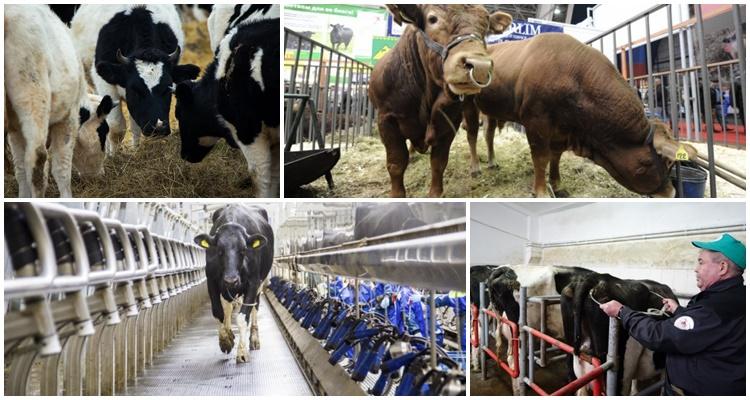
For dairy breeds
The basis is milk yield for the past 3 lactations. The data for appraisal should be taken from the accounting journals, which are mandatory for keeping on the farm. The fat content of dairy products, the level of protein content are calculated. The data obtained are compared with those of breeding cows.
For young animals
Only live weight at birth and at the time of grading, as well as genetics and physique, are taken into account. Potential future productivity is also taken into account. The conformity of the breed is also determined. The first grading is carried out when the young are 6 months old.
For bulls
Individuals are considered for purebredness and ability to reproduce breeding offspring. The quality of bulls is similar to the definition of quality of cows. The scores are also identical. It is permissible to change the class and category of the bull, provided the quality of its offspring increases.
Cattle appraisal results
After grading, the animal is given an overall rating and assigned to one of five classes. On the basis of the identified class, individuals are divided into groups, the first of which is the main (leading or breeding nucleus). It includes the best in productivity and breeding qualities of the representatives of cattle, which ensure further reproducibility of the herd. The second group is animals for expanding the herd. The third is livestock without breeding value for culling.
It is necessary for the formation of a highly productive livestock. The study is carried out on a number of parameters. All individuals from 6 months of age are to be assessed. On the basis of the data obtained, groups of animals are formed: for obtaining offspring, for expanding the herd, for early slaughter.
